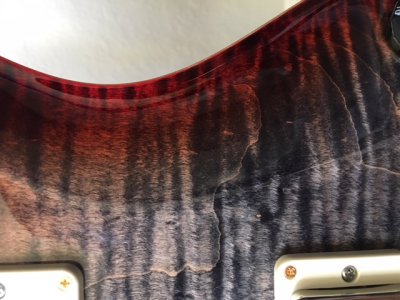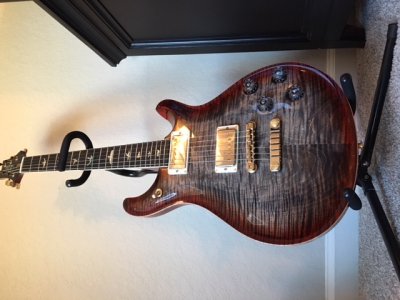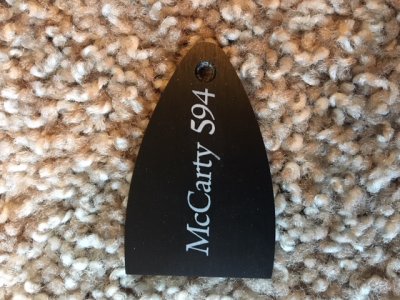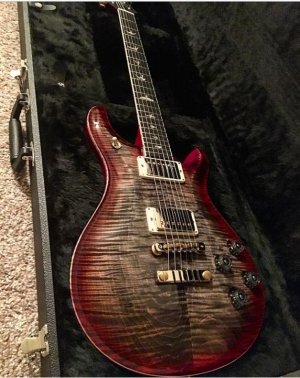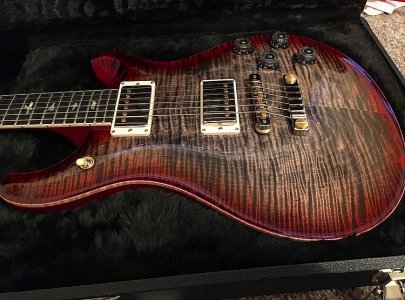Curious about th finish- is it the V12? That V12 finish is basically the same as Warmoths water thin Poly Gloss or satin it appears. I don't know of PRS still finishes some of their model in Nitrocellulose, as stated here, but not sure how old this reference is;
[h=2]6. What kind of finish does PRS use?[/h] In our history, most of our instruments have been finished with a polyester base coat and acrylic urethane topcoat. We feel acrylic urethane looks and feels the close to the old nitrocellulose finishes but avoided the issue of future finish checking. Several PRS models, including our Sunburst, Satin, Modern Eagles, and DGT models use a nitrocellulose finish in order to provide the classic feel and tone of vintage instruments.
In 2010, PRS Guitars introduced its new V12 finish. This finish was developed over 12 years, and it is intended as a midpoint between nitro and acrylic with a classic feel all its own. V12 is extremely thin to allow the guitar to resonate, but it is still incredibly durable with no risk of reacting to leather or guitar stands in a negative way.

